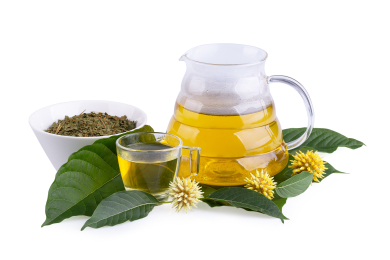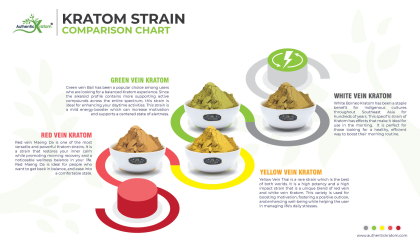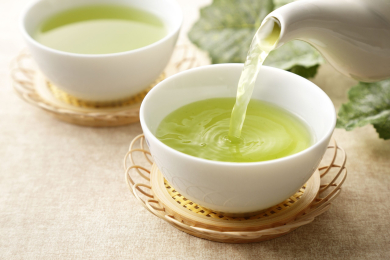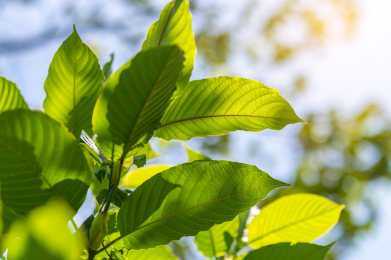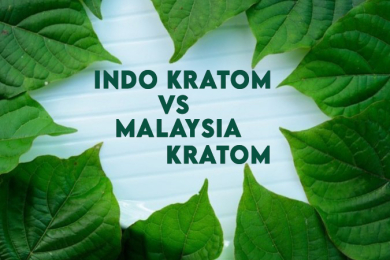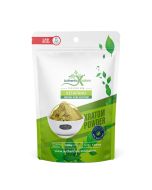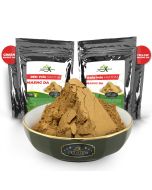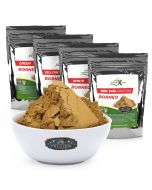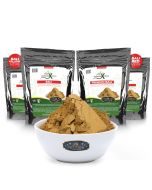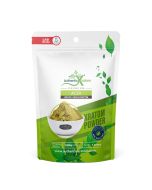- Buy any two kratom products, get 3rd one FREE
- There's No Minimum for Free Standard Shipping at Authentic Kratom
- Same Day Shipping. Order before 2:00 PM Pacific Time (M-F)
- Free Priority Mail Shipping on Orders $75 or more
- FREE 2 Day Shipping on orders $200 or more
- Buy Fresh & Potent Kratom Tea
How To Grow Katom at Home? | Indoor Kratom Growing Guide
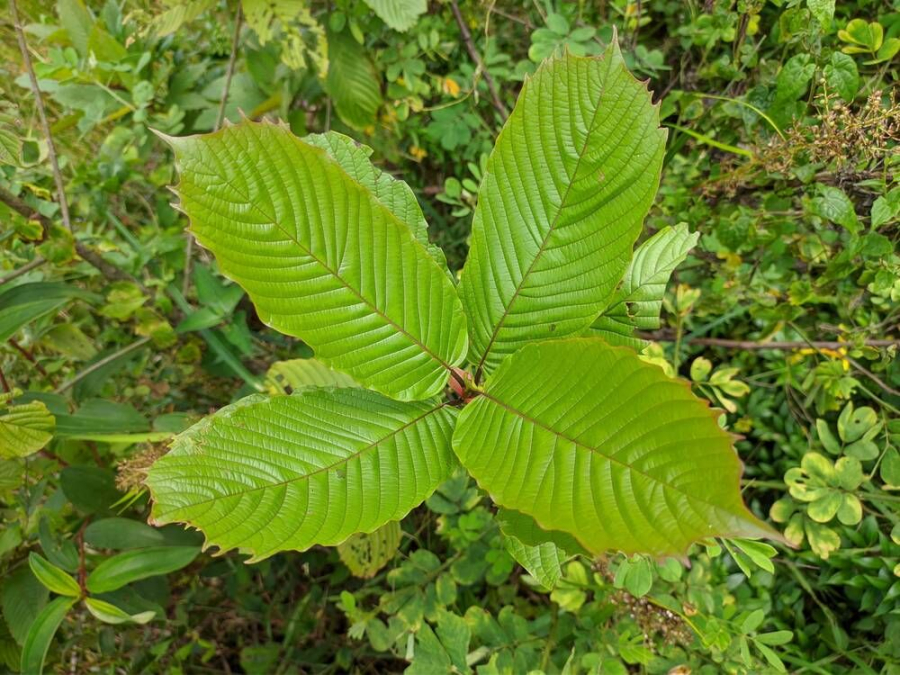
Why trust Authentic Kratom
- 10 years of experience in the kratom industry
- High expertise confirmed by a partnership with the American Kratom Association
- Only lab-tested and GMP-qualified products
- Reviewed and Trusted by thousands of customers
Mitragayna Speciosa, more commonly known as Kratom, has emerged as the biggest wellness fad of the century. And, to be honest, it deserves all the spotlight and attention, but growing kratom at home isn't easy at all.
It is the single most industry that has truly evolved over the recent years with significant advancements in research and legislative amendments - from taking the medical world by storm to acquiring front coverage in all press mediums. This ultimately fuels a dramatic increase in Kratom supplements' demand as people from all walks of life are eager to tap on its benefits.
Those familiar with the substance, properties, and applications are ordering the products right, left, and center. However, there is still a large chunk of those who are very much interested in growing - and probably bragging about their Kratom produce. And why not? Repeatedly, ordering the plant can be quite expensive. So, isn’t a never-ending and FREE supply of the product a whole lot better?
Therefore, to assist you in your journey growing Kratom at home, we’ve put together this comprehensive guide to equip you with all the essential information, knowledge, materials, techniques, and practically everything else you need to know. Let’s start with some interesting titbits:
Some Quick Tips To Remember
1) First and foremost, don’t wait until you get the seeds, seedlings, or plants to start making arrangements at home. Hit the ground running and get everything ready before you order your kratom seeds. That’s precise because seeds and sprouts are extremely delicate and have a short lifespan. Therefore, it is best to get everything ready beforehand so that they don’t wither and die while you are getting things set up.
2) The second most important piece of advice is: always grow your Kratom indoors. While it is possible to grow it outdoors, it will be an uphill struggle with little to no reward if you do it in a non-tropical climate. Or perhaps straight-up futile in colder regions. That’s why we strongly recommend growing kratom in an enclosed and controlled environment.
3) Finally, let’s not forget that Kratom is a native of the lush lands of Southeast Asia -Malaysian and Indonesian rainforests, to be specific. The plant is used to rainforest-typical tropical weather comprising warm and humid conditions - something you can easily achieve indoors with the right tools.
This ultimately lands at the first step in our journey: picking a suitable room inside the house or building a greenhouse.
Now, on with the details.
The Ideal Growing Conditions For Kratom Plant
1) Ample of Space
The surface area determines the growing kratom size at home of the plant. Remember, the larger the area, the bigger the plant. So, choose the space depending on how long and big you wish the plant to grow. While it takes some effort even to get the seeds to sprout, they’ll grow surprisingly fast after germinating on a larger area, and the trees are known to grow up to 20 feet tall.
A little heads up, if you don’t start with a big pot, you may have to move the tree to a bigger one later on – it will increase the chance of the plant’s contamination or death. So, save yourself the hassle of moving the tree from pot to pot every few weeks and begin your plantation with a large one straight away. Plus, try not to transplant your kratom more than once.
2) Proper Lighting
Growing kratom at home or outdoors? Try not to flood your seeds or cuttings with excessive sunlight during the germination period. Only expose them - to direct sunlight once roots start branching out.
On the other hand, if you plan to grow kratom indoors, the best option for lighting is High-Pressure Sodium (HPS) lights. These are very similar to the natural sunlight the plants receive in their natural habitat.
3) The Right Temperature
The optimum temperature requirements of a Kratom plant hover between 70 to 90 degrees Fahrenheit. Their growth slows down when the temperature drops below 60°F and, with a further decline to 50°F, will wither away plants. So, if you live in a region experiencing severe cold weather, you must invest in indoor grow tents and grow lights. This will regulate the temperature settings to remain akin to one prevailing during the spring and summers in Southeast Asia when they grow the fastest.
4) Controlled Humidity
The humidity and moisture in the air greatly affect the alkaloid concentration of the leaves. And alkaloid levels lend the plant its signature potency and applications.
The average humidity necessary for kratom to grow is between 70 and 80 percent. No wonder some of the best kratom strains come from Indonesian forests, where the moisture is usually around 72-74 percent.
5) Nutritious Soil
The soil you use must meet specific standards. For instance, it must be rich in nitrogen and packed with nutrients and humus. The pH level must ideally stay in the range of 5.5 to 6.5. The soil must also characterize a flawless balance between dense and loose - dense enough to retain moisture and loose enough to drain any excess water. This is crucial because excess water attracts insects and the formation of fungi.
6) Sufficient Hydration Levels
Just like any other plant, Kratom too needs an adequate water supply. You ought to keep the soil moist and spray the leaves constantly.
Watering plants is almost like a full-time job that requires patience, perseverance, and dedication every step of the way. Therefore, as fancy as it may sound, many people opt to install an advanced irrigation system to save hassle and time. Though optional, it is a wise investment for those with hectic routines and wishing to grow a mini-farm or garden of their own - granting long-lasting produce. The rest of us can skip the part.
Growing Kratom At Home
Alright, you have got the place, whether a room in your house or a dedicated greenhouse. And they are all geared up! The lights are set up, you have figured out what to do about the water system, and the soil is ready to go. Now, let’s talk about the seeds.
Kratom trees produce podheads containing about 50 seeds each. When fresh, the seeds have a 20% chance to grow into seedlings. That’s roughly 10 out of 50 seeds. However, the ratio substantially drops if you delay planting them. Hence, a friendly reminder to get everything ready and sorted out before you even buy the seeds.
Next, you need to plant about 5 to 10 seeds per pot. Relax! We know this may sound a lot, but the probability that all the seeds take root is very slim. So, most of the seeds that end up sprouting in the pot will have enough room to grow. You can always transplant them to a different spot in an exceptionally rare scenario of too many seedlings sprouting in one pot.
Wondering how to do it? Sow the seeds in the soil and cover them with a small amount of soil. At this stage, it is crucial that you keep those sprouts away from direct sunlight and cover them with a plastic bag, a plastic tub, or a humidity dome while keeping them moist (not soaking wet). Finally, the roots will begin growing as the seeds turn to seedlings.
Eventually, get the seedlings used to direct sunlight, fresh air, and less humidity. Bear in mind that it should be a slow transition that involves uncovering little by little for the next two weeks after the roots start showing. This, in turn, allows seedlings to adjust and acclimate to their new environment as they grow into plants.
Getting a Headstart with Seedlings and Grown Plants
Another way to have your home-cultivated Kratom Plant is germinating a seedling or a baby plant instead of starting from seeds.
So, let’s say you have ordered seedlings. You would have to transplant them to a moist pot full of peat moss or any other medium of your choice. Next, it’s just about taking care of the seedling the same way you normally would if you had started with seeds.
Likewise, if you begin with a plant, don’t expose them to direct sunlight for the next two days. Cover them with plastic and then get them accustomed to the new habitat by gradually removing the plastic cover during the next week or so.
Pest Control
Sowing kratom seeds is not a tough row to hoe- as long as you have enough seeds and they’re fresh off the tree. The ONLY trick to a successful crop is keeping insects at bay and the seedling fungus-free. No, don’t panic. Just get yourself a couple of bottles of 100% Organic Neem Oil (don’t forget to check the label).
Neem Oil is hands-down the best and most natural way to ward off bugs and other harmful pests or insects. All you have to do is take 1 ounce of oil and dilute it in a gallon of water. Mix it well and spray the plants with the blend. It is also worth mentioning to not fall into the trap of any other pesticides, insecticides, or bug control products as they can damage the plants.
Final Remarks
To sum it up, growing kratom at home is an exercise of immense dedication and patience. It is an effort that, when executed properly, will reward you with a natural and ongoing source of one of the most versatile health and wellness supplements.
All you need to do is strictly abide by this checklist:
1) An indoor garden, room, or greenhouse are the best options.
2) Fix the grow lights to lend the plants a genuine feel of an Indonesian rainforest.
3) Install an irrigation system or timely water the plants yourself.
4) Maintain temperatures between 70 to 90 degrees Fahrenheit and humidity between 70 and 80 percent.
5) Start with the largest-sized pots.
6) Get a dense (but not too dense) soil packed with plenty of nutrients, humus, and nitrogen ready. Also, make sure that pH levels stay between 5.5 and 6.5 at all times.
7) Starting with seeds? Remember 5 to 10 per pot.
8) Seedlings and bigger plants need to acclimate to a less humid environment gradually. 14 days for seedlings; up to 10 days for plants.
9) Kratom plants must stay moist but not soaking wet.
10) Regularly spray Neem oil to keep insects away.
Finally, something that cannot go missing throughout the whole process is YOUR Passion and Commitment. As cheesy as it may sound, this is the single most crucial factor that counts and reflects solid and healthy produce. It would help if you gave it all while thoroughly enjoying the process and remaining content with the results. Because, in the end, it is all worth it.
The above guide has shed light on all the important aspects of gardening your Kratom trees and will hopefully prove to be of immense help in your journey. If you know any other tip or a secret for getting the best crop, don’t forget to let us know. Also, feel free to share your experience in the comments below!



